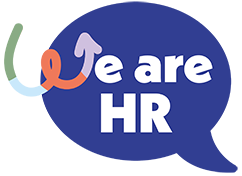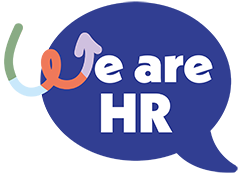Table Of Contents
- What Steps Should I Take to Secure My First HR or L&D Job?
- Introduction
- 1. Crafting an Impressive CV
- 2. Identifying Transferable Skills
- 3. Gaining Practical Experience
- 4. Networking with Professionals
- 5. Continuing Professional Development
- 6. Considering an HR Degree
- 7. Utilising Technology in HR and L&D
- 8. Diversity and Inclusion in HR
- 9. Remote Work and its Impact on HR Strategies
- 10. Soft Skills Development for HR Professionals
- Conclusion
Introduction
Embarking on a career in Human Resources (HR) or Learning and Development (L&D) is a rewarding journey, attracting individuals with a passion for fostering organisational growth. This comprehensive guide aims to provide aspiring HR and L&D professionals with a roadmap to secure their first job in these dynamic fields. Whether you’re a recent graduate or seeking a career change, these strategic steps will enhance your chances of success.
1. Crafting an Impressive CV
Your CV is your initial introduction to potential employers, and making it stand out is crucial. According to industry insights, recruiters spend an average of 6 to 8 seconds reviewing a CV. To capture their attention, tailor your CV for each application, aligning your skills with the specific job description. This targeted approach not only emphasises your suitability but also showcases your dedication to the role.
Additional Tip: Incorporate quantifiable achievements and measurable outcomes in your CV to provide concrete evidence of your capabilities.
2. Identifying Transferable Skills
Transitioning into a new field requires a thorough understanding of your transferable skills. These skills, whether gained from previous roles or developed naturally, should be relevant to the HR or L&D position you’re pursuing. Beyond featuring them in your CV, be prepared to discuss these skills during interviews, demonstrating how they contribute to your potential success in the role.
Additional Tip: Align your transferable skills with the key competencies demanded by the HR and L&D industries, such as problem-solving, decision-making, proactivity, organisational abilities, and effective communication.
3. Gaining Practical Experience
Securing your first job in HR or L&D can be challenging due to the industry’s competitiveness. However, gaining practical experience is a valuable strategy. Consider volunteering within your current organisation’s HR or L&D department, offering your assistance on projects, or shadowing experienced professionals. If this is not feasible, explore online opportunities and resources provided by reputable institutions like the Chartered Institute of Personnel and Development (CIPD).
Additional Tip: Leverage technology to attend webinars, virtual conferences, or workshops that provide insights into current trends and challenges in HR and L&D.
4. Networking with Professionals
Building a robust professional network is essential in HR and L&D, where interpersonal skills play a pivotal role. In the digital era, platforms like LinkedIn offer opportunities to connect with industry professionals, share insights, and expand your network. Beyond virtual connections, consider attending in-person or virtual networking events hosted by professional associations or industry groups.
Additional Tip: Actively engage in online forums and discussions related to HR and L&D, showcasing your expertise and eagerness to learn from peers.
5. Continuing Professional Development
Elevate your employability by pursuing industry-recognised qualifications. The CIPD, with its global recognition and comprehensive course offerings, is a preferred choice among employers. Choose a CIPD course level that aligns with your career stage, ensuring a progressive learning journey that equips you for the challenges of the profession.
Additional Tip: Explore additional certifications and short courses in specialised areas within HR or L&D to enhance your expertise and versatility.
6. Considering an HR Degree
While not mandatory, an undergraduate degree in HR or related fields can be a valuable asset. Research universities that offer comprehensive programmes aligned with industry needs. Recognise the differences between university degrees and CIPD qualifications, weighing the benefits of each in terms of practical skills, specialisation options, and flexibility.
Additional Tip: Seek guidance from industry professionals or mentors to make an informed decision about the educational path that best suits your career goals.
7. Utilising Technology in HR and L&D
Explore the role of technology in modern HR and L&D practices. Discuss the impact of HR software, learning management systems (LMS), and artificial intelligence on recruitment, training, and employee development. Highlight the importance of staying technologically savvy in the evolving landscape of people management.
8. Diversity and Inclusion in HR
Delve into the crucial role of diversity and inclusion in HR practices. Discuss the benefits of fostering a diverse workforce, strategies for inclusive hiring, and creating a workplace culture that values diversity. Address the challenges and opportunities that arise in HR and L&D when promoting an inclusive environment.
9. Remote Work and its Impact on HR Strategies
Explore the growing trend of remote work and its implications for HR and L&D professionals. Discuss strategies for effective virtual onboarding, maintaining employee engagement in remote settings, and leveraging technology for virtual training and development. Examine how HR practices are adapting to the changing landscape of work.
10. Soft Skills Development for HR Professionals
Focus on the importance of soft skills in HR and L&D roles. Highlight the specific soft skills essential for success in these professions, such as empathy, communication, and conflict resolution. Discuss how HR professionals can continually develop and refine these skills to enhance their effectiveness in managing people and fostering positive workplace relationships.
Conclusion
Embarking on a career in HR or L&D requires a multifaceted approach encompassing tailored CVs, transferable skills recognition, practical experience, networking, continuous learning, and educational considerations. By diligently following these steps, you’ll not only enhance your chances of securing your first job but also set a solid foundation for a successful and fulfilling career in the dynamic world of HR and L&D. Best of luck on your journey!


